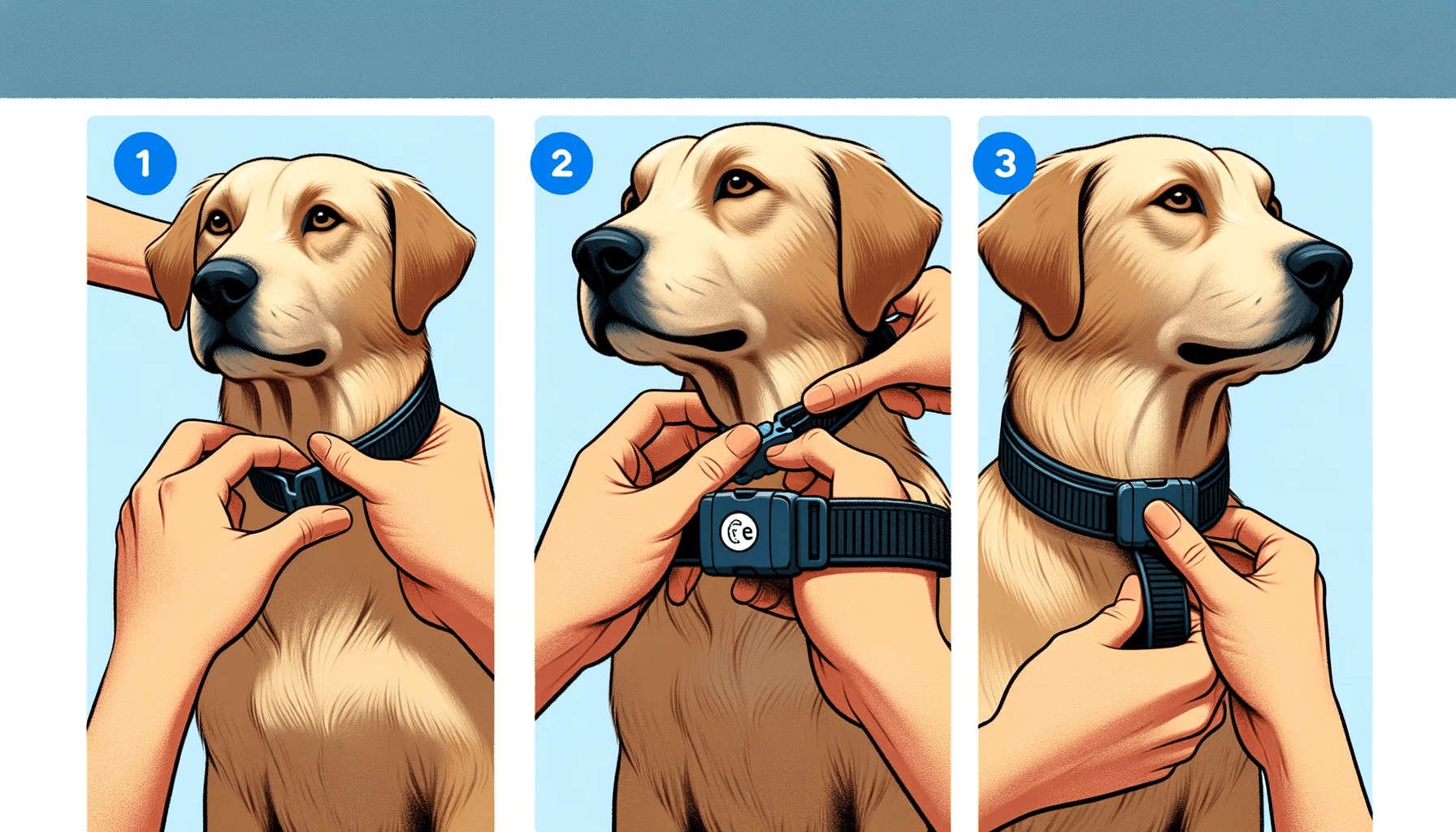Do you ever wonder what to call a female dog?
Well, as the saying goes, ‘Every dog has its day,’ and female dogs are no exception.
A female dog is commonly referred to as a bitch. This term has its roots in Old English, where it meant a female dog.
However, it’s important to note that outside of certain contexts like dog shows and breeding circles, using the term ‘bitch’ can be seen as derogatory.
To avoid any unintended offense, it’s recommended to use alternative terms like ‘female dog’ or ‘girl dog’ in casual conversations.
But in professional settings, such as veterinary medicine or dog breeding discussions, the term ‘bitch’ is still commonly used to specify the gender of a female dog.
Key Takeaways
- The term ‘bitch’ is commonly used to refer to a female dog.
- Outside of specific contexts like dog shows and breeding circles, using the term ‘bitch’ can be seen as derogatory.
- Alternative terms like ‘female dog’ or ‘girl dog’ are recommended in casual conversations to avoid unintended offense.
- In professional settings like veterinary medicine or dog breeding discussions, the term ‘bitch’ is still commonly used.
The Scientific Term for a Female Dog
If you’re wondering what to call a female dog, the scientific term is ‘bitch’. Derived from the Old English word ‘bicce’, which meant female dog, this term is commonly used in scientific communities to differentiate between male and female dogs. When discussing female dogs in a breeding program, they’re referred to as ‘brood bitches’, highlighting their role in producing offspring. On the other hand, a spayed female dog, one that has undergone a surgical procedure to remove her reproductive organs, is simply referred to as a ‘spayed dog’.
Understanding these terms is crucial for responsible dog ownership and effective communication with breeders and veterinarians.
The term ‘bitch’ not only serves as a neutral and descriptive term for female dogs but is also used to describe their reproductive cycle. Just like in other mammals, female dogs go through a reproductive cycle, commonly known as the ‘heat’ or ‘estrus’ cycle. During this cycle, which typically occurs every six to twelve months, a female dog becomes sexually receptive and capable of breeding. This is an essential aspect of their biology and plays a significant role in the propagation of the species.
Alternative Terminology for Female Dogs
When it comes to referring to female dogs, there are alternative terms that can be used in non-dog show or non-dog breeding conversations. While the official term for a female dog is ‘bitch,’ derived from the Old English word ‘bicce,’ it’s important to recognize that this term may carry negative connotations in certain contexts.
Instead, it’s recommended to use terms like dog, female dog, or girl dog when referring to female dogs in everyday conversations.
Using alternative terminology not only helps to avoid potential misunderstandings, but also promotes a more inclusive and respectful approach towards our canine companions. By using terms like dog or female dog, we can focus on the unique characteristics and qualities that these animals possess, without relying on potentially offensive or outdated language.
Understanding the appropriate terminology for female dogs is essential for responsible ownership and effective communication. While the scientific and professional term for a female dog is ‘bitch,’ commonly used in veterinary science and canine breeding, it’s important to consider the context in which these terms are used. By using alternative terminology, we can create a more inclusive and positive environment for discussing and appreciating our female canine friends.
Proper Terminology in Veterinary Medicine
When it comes to veterinary medicine, using proper terminology is essential for effective communication and accurate diagnosis. Gender-specific medical language plays a crucial role in distinguishing between male and female dogs, allowing veterinarians to provide appropriate care and treatment.
Understanding the terminology used in veterinary practice ensures clear communication and reduces the risk of misinterpretation, leading to better outcomes for our furry companions.
Gender-Specific Medical Language
To accurately communicate about female dogs in the field of veterinary medicine, it’s essential to use gender-specific terminology such as ‘bitch’ as the official term for a female dog.
The term ‘bitch’ is derived from the Old English word ‘bicce’, which simply meant a female dog. While some may view this term as derogatory in everyday language, it’s widely accepted and used among professionals in the veterinary community.
Using gender-specific medical language is crucial for precise and effective communication in the field of veterinary medicine.
Terminology in Veterinary Practice
Use the term ‘bitch’ to ensure clear and precise communication in veterinary practice when referring to female dogs.
In the field of veterinary medicine, it’s important to use the correct terminology when discussing female dogs. The official term for a female dog is ‘bitch,’ which is derived from the Old English word ‘bicce.’ This term is widely accepted and used in scientific research studies, professional discussions, and medical records.
Proper terminology in veterinary practice is essential to reduce the risk of miscommunication and medical errors. By using the term ‘bitch,’ veterinarians and veterinary professionals can effectively convey information about female dogs, including their breeding, behavior, and health, with clarity and precision.
This contributes to the professionalism and effectiveness of veterinary practice, ensuring the highest quality of care for our furry friends.
Significance of Terminology in Dog Breeding
Understanding the significance of terminology in dog breeding is crucial for clear communication and effective breeding practices. In the context of dog breeding, the terminology used to refer to female dogs holds great importance. While the term ‘female dog’ is a neutral and scientifically accurate way to refer to a dog of the female sex, the term ‘bitch’ is widely recognized and commonly used in the breeding community.
The use of the word ‘bitch’ in dog breeding serves to differentiate between male and female dogs and denotes the breeding status of a female. It allows breeders to discuss and track the lineage, health, and characteristics of specific females throughout the breeding process. By using this specific terminology, breeders can communicate more precisely about the reproductive capabilities and potential breeding outcomes of female dogs.
Furthermore, understanding the significance of terminology in dog breeding helps breeders maintain professionalism and adhere to established breeding practices. It promotes clarity in discussions about breeding strategies, health testing, and genetic traits. Accurate terminology also helps ensure that breeding decisions are made based on a thorough understanding of the female dog’s characteristics, suitability for breeding, and overall well-being.
Using the Right Term in Everyday Conversation
When engaging in everyday conversation about female dogs, it’s important to use gender-neutral language to promote inclusivity and avoid misconceptions.
While terms like ‘girl dog’ or ‘female dog’ are commonly used and generally understood, it’s crucial to be aware of the scientific term ‘bitch’ and its appropriate usage in professional contexts such as dog breeding or veterinary medicine.
Gender-Neutral Language Importance
To effectively communicate in everyday conversation, it’s crucial to prioritize the use of gender-neutral language when referring to female dogs.
In the English language, the term ‘bitch’ has historically been used to designate a female dog. Derived from the Old English word ‘bicce,’ it has been in use for centuries.
However, in non-dog show or non-dog breeding contexts, it’s recommended to use alternative terms such as ‘female dog’ or ‘girl dog’ to avoid misunderstandings or being perceived as swearing. This is especially important to maintain professionalism and clarity in everyday conversations.
Common Usage Misconceptions
If you want to avoid confusion or potential offense, it’s important to know the correct term to use when referring to female dogs in everyday conversation.
While the official term for a female dog is ‘bitch,’ it’s primarily used among dog show participants and breeders.
In non-dog show or non-dog breeding conversations, using the word ‘bitch’ might lead to misunderstandings or be perceived as swearing.
Instead, it’s recommended to use terms like ‘dog,’ ‘female dog,’ or ‘girl dog’ in casual conversation. This helps to avoid unintended offense and ensures clear communication.
In veterinary science and canine breeding, however, using the scientific term ‘bitch’ is necessary for clarity and precision in professional communication.
Common Misconceptions About Female Dog Terminology
You might be surprised by the common misconceptions surrounding the terminology for female dogs.
One of the most prevalent misconceptions is that using the word ‘bitch’ to refer to a female dog is offensive or inappropriate. However, in the world of veterinary science and canine breeding, ‘bitch’ is the scientific and professional term used to specify the gender of the dog. It’s important to understand that the word ‘bitch’ has a long history and is derived from the Old English word ‘bicce,’ which simply referred to a female dog.
Another misconception is that the word ‘bitch’ is the only acceptable term to use when referring to a female dog. While it’s the official term, it isn’t always appropriate in casual conversations or non-dog breeding contexts. To avoid misunderstandings or being perceived as swearing, it’s recommended to use terms like ‘female dog,’ ‘dog,’ or ‘girl dog.’
Some people also mistakenly believe that the word ‘bitch’ is exclusively used for female dogs involved in breeding programs. In reality, a female dog involved in breeding is referred to as a ‘brood bitch,’ while a female dog not used for breeding is simply called a ‘bitch.’
Understanding the terminology and reproductive cycle of female dogs is essential for responsible ownership. By being aware of these common misconceptions and using the appropriate terminology, owners can make informed decisions regarding spaying or breeding their female dogs.
Frequently Asked Questions
Are There Any Other Scientific Terms Used to Refer to Female Dogs?
There are indeed scientific terms used to refer to female dogs. These terms may vary across cultures and have evolved over time. Linguistic analysis reveals patterns in the terminology, which may be influenced by gender norms and stereotypes, reflecting societal attitudes towards women and femininity.
What Are Some Alternative Terms That People Use to Refer to Female Dogs?
There are several alternative terms for female dogs that people use. These include bitch, lady dog, girl dog, and she-dog. These terms are synonyms and can be used interchangeably when referring to female dogs.
How Important Is the Use of Proper Terminology for Female Dogs in Veterinary Medicine?
In veterinary medicine, using proper terminology for female dogs is crucial. It promotes inclusivity and diversity in the field while enhancing pet owners’ understanding of their dogs’ health. Cultural influences and language challenges can complicate standardization efforts.
What Is the Significance of Using the Right Terminology When It Comes to Dog Breeding?
Using proper terminology in dog breeding is crucial. Accurate veterinary terminology helps avoid misconceptions and ensures breeders understand the breeding implications. It is essential to use the proper terminology in dog breeding for successful outcomes.
What Are Some Common Misconceptions or Misunderstandings People Have About the Terminology Used for Female Dogs?
Common misconceptions about terminology for female dogs stem from cultural influences and historical context. Stereotypes and gender bias have perpetuated inaccurate assumptions. Understanding the correct terms helps break these misconceptions and promotes accurate communication in dog breeding.
Conclusion
In conclusion, when discussing female dogs, it’s important to be mindful of the terminology we use.
While the term ‘bitch’ is commonly used in professional settings such as veterinary medicine or dog breeding, it can be seen as derogatory outside of these contexts.
To avoid any unintended offense or misunderstanding, it’s recommended to use alternative terms such as ‘female dog’ or ‘girl dog’ in casual conversations.
By using the right terminology, we can foster better understanding and respect for these wonderful creatures.






